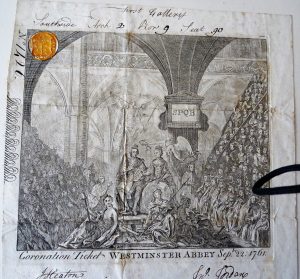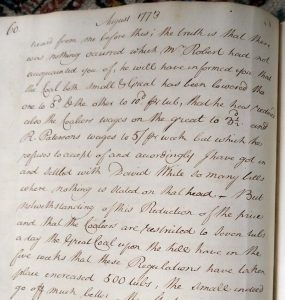Robert Balfour-Ramsay
Robert Balfour of Balbirnie (1698–1766), from Fife, Scotland, was Member of Parliament for Edinburghshire from 1751 to 1754. His grandfather, George Balfour (d.1665), made a fortune as a clothier in London and Edinburgh, and bought the Balbirnie estate near Kirkcaldy in 1642. His parents were George Balfour of Balbirnie and Agnes Lumsdaine. For his part, Robert Balfour (c.1698-1767) married Anne, the heiress of Sir Andrew Ramsay of Whitehill, Midlothian, in 1736. In 1744, Anne’s brother, Sir John Ramsay, 5th bt., died without issue, so her husband Robert Balfour inherited the Whitehill estate in her right and took the additional surname Ramsay as required by the indenture. Robert and Anne had six sons and two daughters who lived to maturity.
The eldest son, John Ramsay Balfour (1738-1813), succeeded to Balbirnie, and the second son, George Balfour Ramsay (1740-1806) inherited Whitehill. George, however, died unmarried and so Whitehill passed to his next brother, Andrew Balfour (1741-1814), an advocate and judge, who was also unmarried, and finally to a third brother, General James Balfour (1743-1823). All three brothers took the additional name Ramsay and all three died without issue, so General Balfour left the estate to Robert, the eldest son of his sister Elizabeth (1745-1816) and her husband, Captain William Wardlaw RN. Robert Wardlaw-Ramsay (as he became) married Lady Anne Lindsay and they drew up plans to rebuild the old house at Whitehill, a project that was only accomplished by their son, also Robert. The deaths of so many members of this generation of the family without children and after prosperous careers, led to an accumulation of wealth by their surviving siblings. The result was that in 1823 General Balfour left an estate valued at £265,925 and his sister Ann an even more impressive estate of £299,198 in 1826. The General’s wealth passed chiefly to his heir at Whitehill, but Ann’s estate benefited the children of her eldest brother, John.
Legal record: Robert Balfour‘s younger brother Andrew inherited the estate in 1806. One of his legal record books survives: Letter Book from 3rd March 1773 to 31 December 1774. This rare survival casts light on the Balfour-Ramsays’ commercial and social network. Details about all kinds of rents, including for coal mines, are among the letters.
Member of Parliament: Returned unopposed at a by-election for Edinburghshire in 1751, Robert Balfour-Ramsay regarded himself as keeping the seat warm for Robert Dundas, the son of the former Member. On 14 Sept. 1753 he offered to stand down in favour of Dundas, explaining that it was only with reluctance that he had taken the seat:
“…as it was a thing when proposed, that I had not entertained a thought of, so had I rested on my own opinion, without regard to those who intended me such an honour, I should have declined it.”
After his father’s death in 1754 Dundas accepted the offer of the sitting Member for Edinburghshire to stand down in his favour at the general election, having secured the approval of Pelham and Hardwicke. This is how General Bland described his friend: “His great knowledge, politeness and candour have amply recommended him to all friends of Government and gained him a thorough confidence; and in the House of Commons he has succeeded beyond expectation for so short a time.”
Balfour-Ramsay, as the previous MP, may have attended the coronation of George III, (King of England, 1738 1820): this Coronation ticket is among the surviving papers. Westminster Abbey, Sep. 22, 1761, entrance ticket for the coronation of King George III, with large copper engraving of George III and Queen Charlotte in coronation robes, surrounded by their subjects in Westminster Abbey, blind embossed gilt seal to upper left, numbered and with seat number in ms., approx. 260 x 270 mm

